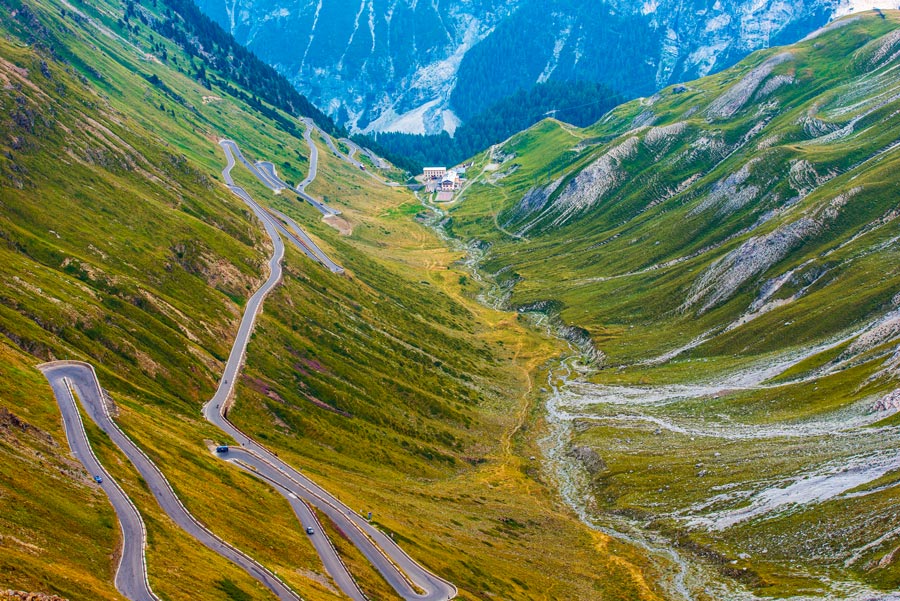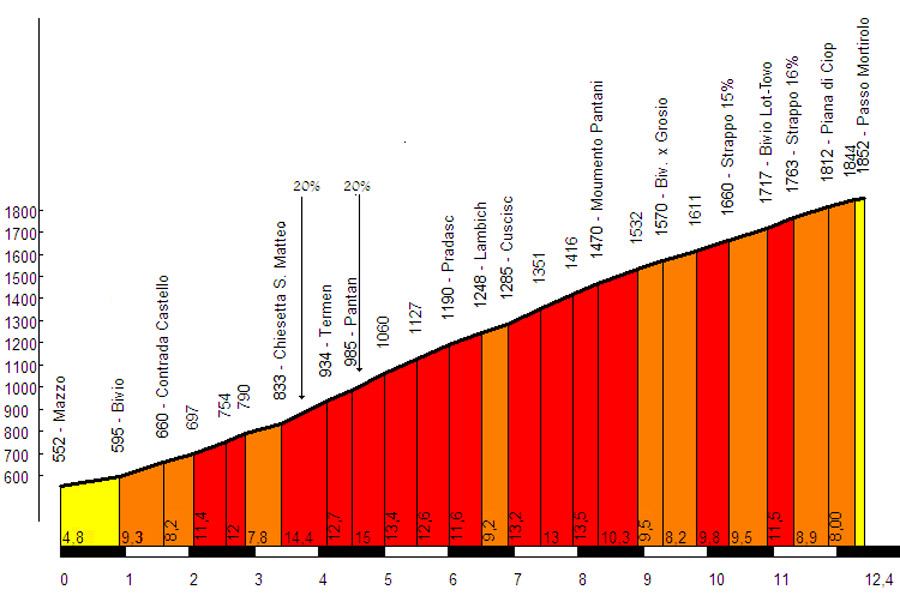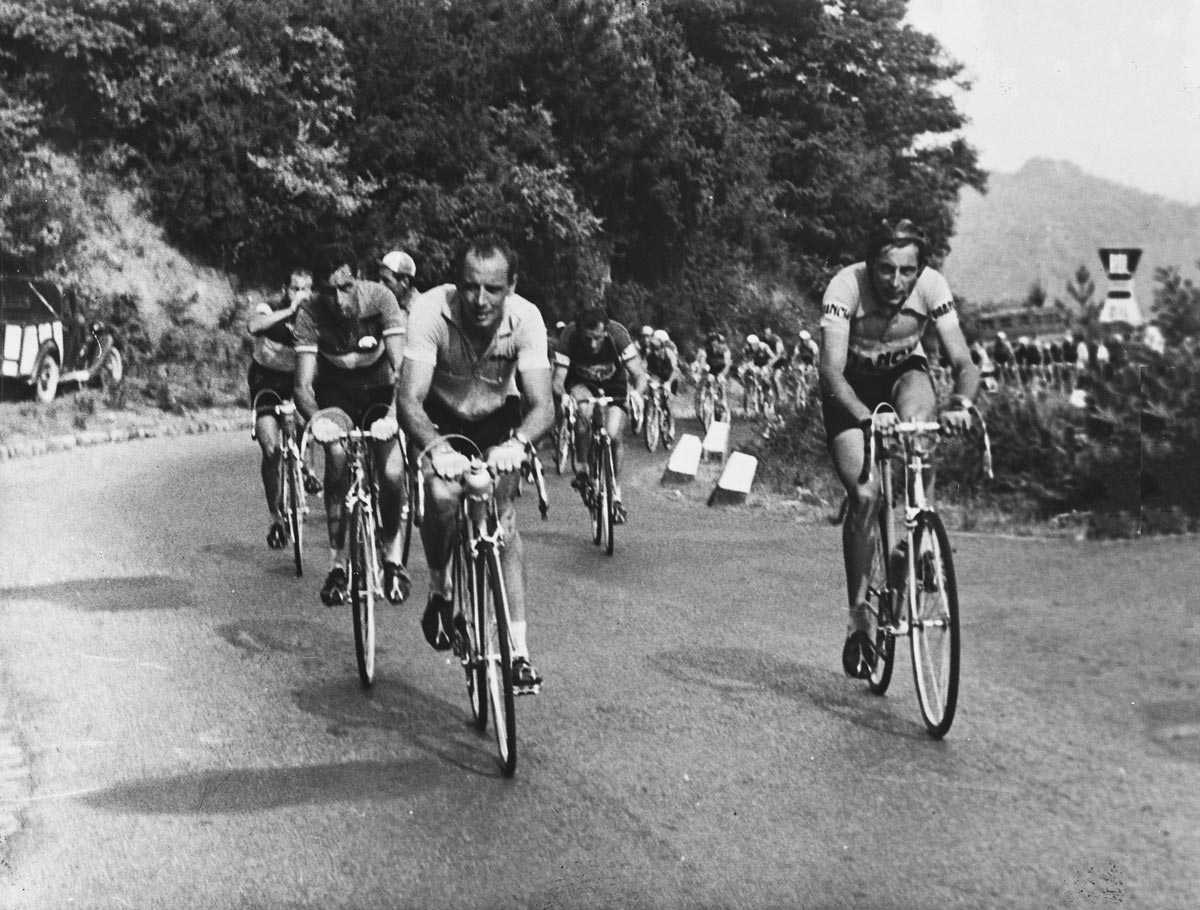The historical passes of the Giro d’Italia: the steepest paths, the unforgettable feats
This year the Giro d’Italia, which begins at the unprecedented and controversial start of Jerusalem, will cover the highest point in the nineteenth fraction, on the Colle delle Finestre (Window Hill), which is referred to as Cima Coppi of this edition. This is a long and difficult climb between the Val di Susa and Val Chisone, which has already proved itself as a feat for the racers in the 2005 Giro, with the winner Paolo Savoldelli who managed to defend the pink jersey from the attacks of adversaries better prepared for high slopes, all with his tenacity and intelligence.
This climb is relatively young in the Giro, and was chosen on three different occasions since 2000, but the big climbs have always made the history of the pink race. The historic Alpine passes have for decades been in the imagination of sports enthusiasts. Passes such as the Stelvio, the Gavia and the Pordoi have been the theater of the greatest feats of international champions and have always heated the interest of many fans, always ready to emulate them.
The passes of the Giro are not only spectacular frames for the professionls, but also tracks accessible to all the enthusiasts willing to put themselves to the test following the footsteps of their heroes.

The debut of the Dolomites
The great Dolomite passes became decisive already at the end of the 30s, while in the 40s they became the privileged stages for the famous battles between Bartali and Coppi. In 1937 the first real Dolomite stop was created, where Bartali built his victory on the Rolle pass and on the Costalunga. Ten years later, in 1947, Coppi will be on the same mountains, on the Falzarego and on the Pordoi, ready to take his pink jersey with a great feat in the last stop. “L’Airone” (the Heron), who had already won the Giro in 1940 when still very young, starting as Bartali’s gregarious, finds here his consecration, succeeding in overtaking the great adversary and recovering the delay accused in the previous stage due to a crisis on the Mauria pass.
Lo Stelvio
In 1953 comes the Queen Mountain, the Pass of Stelvio, that with its 2758 m of height has been “Coppi’s Peak” in all the editions when selected for the race. On this occasion, the great champion became protagonist as he won his fifth and last Giro. It happened that the victory seemed destined to the opponent, the Swiss Hugo Koblet, who had resisted all the attacks of the Italian rider in the previous stages. Left for show was the penultimate part of the Tour, of just 125 km, but the vigor of Coppi’s attack on the new Stelvio ramps defeated Koblet. The Swiss, trying to catch up, fell twice downhill, leaving the victory to Coppi and eventually abandoned the jersey.
In 1975 the Stelvio is an incredibile point of arrival of the Giro, and it was the setting for a captivating head-to-head between race leader Fausto Bertoglio and Spaniard Francisco Galdós, who followed him in the rankings at just 40 seconds. Galdós managed to precede the opponent on arrival, but not enough to tear off his pink jersey.
Located in the Rhaetian Alps, the Stelvio connects Lombardy and Trentino, also reaching Switzerland, in the area of the Ortles-Cevedale group. It is a long Alpine climb that reaches a considerable altitude and covers a large gradient. The slopes are of medium difficulty on all three sides. The Giro has faced the Altoatesino side more than once, starting from Prato allo Stelvio, which is also the most difficult of all. Here the ascent, which has 48 hairpin bends in the central section, is 26 km long, with an average slope of 7.7% and a maximum slope of 11%, for an overall height difference exceeding 1800 m. Shorter and with slightly lower slopes, the ascent on the Lombard side, often chosen by the organizers. Only in 2017, instead, the pink race went from the Swiss side, with the victory of the Spaniard Mikel Landa.


The Gavia
The Gavia pass, which connects the Val Camonica and the Valtellina, is one of the great stops on which the most recent history of the Giro was built. With its 2618 m of height it is one of the highest alpine passes in Europe. The length, the medium-high slopes and the important height difference make it a very spectacular track since its first appearance in the Tour of Italy in 1960. The Brescian side has a more difficult climb than the Valtellina one. Starting from Ponte di Legno you go up for about 18 km, the average slope is 7.9%, the maximum reaches 12% for a drop of about 1380 m.
The prohibitive weather has often made it impossible to climb, but when it has, it has always been epic and unforgettable. This is the case of the fourteenth stop, Chiesa in Valmalenco-Bormio, of the 1988 Giro, when the Gavia was chosen for the second time. A snowstorm and very cold temperatures made the race a real elimination race. The Dutch Van der Velde on the run, covered only by his own cyclamen-pink shirt, had to stop on the track to avoid risking frostbite. The American Hampsten gained here the final victory of the Giro managing to keep the wheel of the winner Breukink up till the finishing line. The advantage accumulated on the pink jersey of Franco Chioccioli was in fact almost 5 minutes, yet the exhausted American rider had to be dragged on the podium, unable to stand up.
Il Mortirolo
With its 1852 meters of height, an average gradient of over 10%, maximum gradients of up to 18% and an elevation gain of around 1,300 m over 12.5 km in length, that towards Mortirolo, from the Valtellinese side, is considered by many the hardest climb in Europe. This narrow mountain road, which climbs between the provinces of Sondrio and Brescia, has been included in the Giro d’Italia since 1990. The race then passed through it many times but the most famous enterprise remains the one it saw , in 1994, the climber skills of a young Marco Pantani jumped into the eyes of the general public. The rider, who still wore the white and blue Carrera uniform, having already won the stage of the previous day, finally took the scene right on the Mortirolo leaving behind all the adversaries including the Spanish champion Miguel Indurain. The final victory of the stage was not enough to mortgage the lap record, won by the Russian Berzin. This first striking action on such a prestigious stage, however, brought to light the talent of the Romagna Champion who would have ignited the climbs of the Giro and the Tour in the following years, succeeding in completing the prestigious pair of trophies in 1998.


The top of Mount Zoncolan
The most challenging peak of the 2018 tour is that of Mount Zoncolan. This cannot yet be called a historical peak but it has all the requirements to become one. From the west side, after the built-up area of Ovaro, the road climbs 1,210 meters in altitude in only 10.5 km in length, with an average gradient of 11.6% and peaks over 20%. These characteristics allow the ascent towards the Zoncolan to contend with full rights with the Mortirolo and the Angliru the most difficult top title of Europe.
The “Kaiser”, so nicknamed for its grandeur and difficulty, has been included in the program of the Giro since 2003 and has immediately created considerable selection. The winner was Gigi Simoni who thus consolidated his ranking advantage and won the Pink Race of that year. The Trentino athlete won the Zoncolan stage also in 2007 when he was climbing for the first time from the Ovaro side.
Also in this edition the top of the Zoncolan promises to put the competitors to the end and ensure a great show for all the fans.


